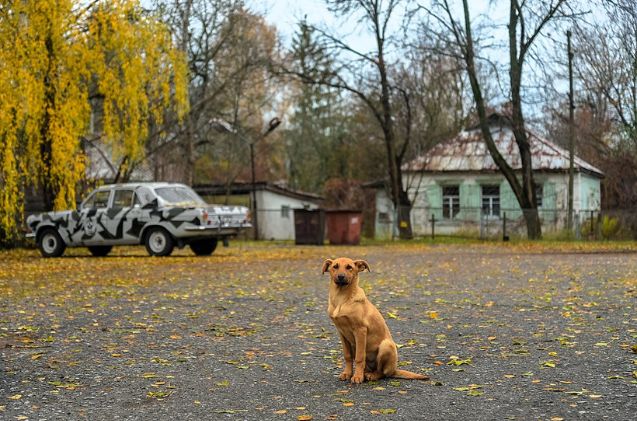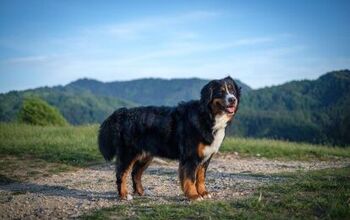Chernobyl Dogs Are a Genetic Mystery

The 1986 Chernobyl nuclear disaster made headlines as the worst nuclear accident in history. A routine safety test that went wrong led to the release of 400 times more radioactive material than when the atomic bomb was dropped on Hiroshima. Not only did this result in immediate loss of life, but the radiation levels at the Chernobyl site remained high enough that the area surrounding the plant is still considered unsafe and deemed an exclusion zone today.
But humans aren’t the only ones that experience the impact of a disaster of this magnitude. Animals living nearby at the time of the accident and those that have moved into the exclusion zone in the years since have been exposed to high radiation levels. This includes a population of wild dogs that have come to be called the “Chernobyl dogs.”
The dogs in this area today are believed to be the descendants of pets that were left behind when residents were forced to evacuate the area. Having grown up and lived with this nuclear exposure, the dogs provide a unique glimpse into the ongoing impact of radiation exposure.
Intrigued by the fact that the dogs were able to live and thrive in the area without experiencing the worst health consequences, researchers believe that they can help us better understand how to survive a similar situation should it arise in the future.
Identifying a growing population of free-roaming dogs living in the area, Clean Futures Fund, a non-profit based in the United States, began organizing veterinary clinics to provide necessary veterinary care. This included medical care, vaccinations, and spaying/neutering to help control the population. Researchers paired with the organization to collect genetic samples from a total of 302 dogs, including those living directly around the power plant itself as well as those in the nearby city of Pripyat.
These samples were analyzed and researched by experts in the field, including National Human Genome Research Institute geneticist Elaine Ostrander.
“These dogs are surviving generation after generation, they’re fertile, they’re carrying out all their bodily functions, and they even have behavioral relationships with people in the area – they’re doing all the dog stuff they’re supposed to be doing,” Ostrander explained. “What’s allowed them to overcome [the radiation]? From the viewpoint of someone at the National Institutes of Health, we really care about that.”
The official study, published on March 3, 2023, explained that the researchers could not definitively identify radiation-related changes in these samples. But this did provide a clear baseline for future study.
Interestingly, the samples revealed a noticeable genetic difference between the dog population living around the power plant and those living in the city. All the dogs could be traced back to 15 distinct family groups, each with its own identifiable geographic territory. Both the power plant dogs and the city dogs shared DNA with German Shepherds and other Eastern European shepherd breeds. However, the dogs in the city also had DNA variants associated with Rottweilers and Boxers.
Identifying the dogs’ ancestry will allow researchers to compare the DNA of the Chernobyl Dogs to that of healthy breed-specific specimens. This will give them a better understanding of the genetic changes the dogs have experienced with each new generation.
Researchers will continue to analyze this data to understand the impact of long-term radiation exposure at a genetic level.

Britt Kascjak is a proud pet mom, sharing her heart (and her home) with her “pack” which includes her husband John, their 2 dogs – Indiana and Lucifer – and their 2 cats – Pippen and Jinx. She has been active in the animal rescue community for over 15 years, volunteering, fostering and advocating for organizations across Canada and the US. In her free time, she enjoys traveling around the country camping, hiking, and canoeing with her pets.
More by Britt























